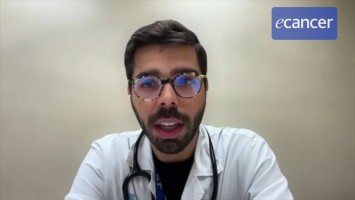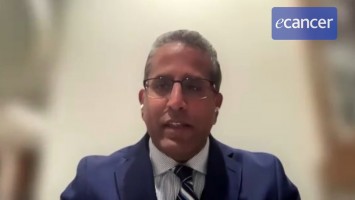ASCO 2011 Annual Meeting, 3—7 June 2011, Chicago
ASCO 2011: Developments in ovarian cancer therapy
Professor Christian Marth – Innsbruck Medical University, Austria
This ASCO is very interesting, I think, for the gynae oncologic community. There are three major topics in this year we can discuss: first of all we know that angiogenesis inhibitors are able to prolong survival. Last time we saw some minor improvement in progression free survival but this year ICON7 data clearly demonstrates that in a subgroup with poor prognosis, meaning patients with more than 1 cm residual disease, or stage 4, have very real improvement in overall survival. So that’s a proof of principle that angiogenesis inhibitors are able to do good work in ovarian cancer. I think that’s one very important topic.
That’s a breakthrough, without a shadow of doubt.
That’s a breakthrough, yes, no doubt about it. The second point, of course, are the PARP inhibitors and this year Jonathan Ledermann will show very impressive data with single agent olaparib in patients achieving a complete remission after recurrence. They have been treated with cisplatinum based therapy and after achieving a complete remission they initiated a maintenance therapy with olaparib or a placebo and they showed a tremendous difference in progression free survival, it was doubled by this agent. So that means that the BRCAness phenotype in ovarian cancer is quite frequent and we have really a new drug on the horizon and now, of course, we have to look how can we integrate this drug in daily practice. So that’s not the final story.
That’s number two.
Yes, and the third point is that we know that chemotherapy has changed dramatically; we had to take carboplatin paclitaxel for now almost twenty years and we know that there are also toxicities and, especially in the recurrent situation, if we retreat these patients with the drug then we have a lot of toxicities. Two years ago the CALYPSO trial was presented for the first time here at the ASCO meeting showing about 970 patients that you can change from the carboplatinum paclitaxel to a combination of carboplatinum and pegylated liposomal doxorubicin. This combination resulted in clearly less toxicity, so less neurotoxicity, it was 24% in the carbo-tax regimen and it was only 4% in the pegylated liposomal doxorubicin arm. Again less alopecia, almost no alopecia and that, I think, is a very important point for the recurrent ovarian cancer patient because unfortunately they know they have to die and the treatment and the quality of life is very dependent on these side effects, neurotoxicity and alopecia. And the trial in addition to that was able to show that it is not only less toxic but also more effective in augmenting the progression free survival about two months, from 9.4 to 11.3 months. And this ASCO we can show that after now a follow-up of forty months the hazard ratio of 0.83 is still maintained so we have an improvement in progression free survival, however this cannot be translated into an overall survival benefit. But, nevertheless, it’s a positive trial because the toxicity is reduced and this means a lot to these ovarian cancer patients.
So you’ve got these three really interesting and really quite different high points in ovarian cancer management. What is that going to mean this year, next year for the gynae oncologists? The patient comes in with an, as usual, advanced ovarian cancer because we rarely ever see the early ovarian cancers; what’s the sequence, do you think, going to be in a year’s time? Surgery first still?
Yes, there’s no doubt.
So that’s an easy one.
The surgery is the mainstay and, of course, it’s the most important factor we can influence today and we know that the optimal debulking, and we started to say optimal debulking is less than 2 cm, then less than 1 cm, nowadays we have to say optimal debulking is no visual residual disease. And that’s the most important.
And that’s straightforward?
Yes.
And unquestioned. Next after that? Chemotherapy?
Yes.
Carbo pegylated dox or…?
At the moment still carboplatin paclitaxel and if we look on the ICON7 data we have to add something in addition to that, I think, and that could be bevacizumab.
Or an oral antiangiogenesis inhibitor, there are several trials on-going as well.
There are several trials on-going, yes.
And then the PARP?
The PARP at the moment are not available, of course, outside clinical trials and I think we have to look how can we integrate this. The GOG is planning a huge four arm trial including PARP inhibitors concomitantly with the chemotherapy or sequential or only as maintenance. So at the moment we don’t know how can we use these PARP inhibitors because, of course, the combination with chemotherapy will augment toxicity and therefore it’s not clear what’s the best way to apply it.
Has that been shown, that carboplatin, say pegylated doxorubicin, for the sake of argument, plus PARP inhibitor gives increased toxicity?
Yes, that has been shown.
That’s been shown? OK. So you’re looking at some sort of sequential?
Yes, and the British trial has used the PARP inhibitor as single therapy and I think that’s really a very good possibility to propose a patient an agent which she can take orally and it’s very efficient.
When will it become common practise to look for BRCAness down the line?
That’s a good question. We really don’t know what is the best marker to define this BRCAness phenotype. At the moment we use simple histology, we say a serous carcinoma, that’s endometrial carcinoma, that’s the phenotype which we can treat. Of course we have to look at it’s a targeted therapy, we know something about the target and then we have to measure. The mutation may play a little role because it’s only one-third you will find a mutated BRCA1 or 2, maybe other factors like methylated BRCA genes or even other mechanisms downstream of the BRCA will affect the responsiveness to these agents. So at the moment we do not have a good test to predict the response to these agents.
And then the trials that are on-going now will be reporting at ASCO 2012, what are they going to be saying?
Maybe.
Or maybe 2013. What’s your hope for them?
I think next year we will have new data, major data, about the role of bevacizumab because we have to wait also for GOG218 on more data about the role of bevacizumab and the American experience. So I think we have to wait next year for the on-going trials and I hope especially that also the PARP inhibitor will come up with new results.
So for patients with ovarian cancer, this has been a remarkable last five years.
Yes.
Because not only are we looking, for the first time in my forty years as an oncologist, at an increased survival but we’re also seeing less toxicity because we’re packaging the existing drugs in a safer way and causing the patient a lot less harm.
Yes, that’s a big step forward because the patients tolerate the treatment better and have even a better outcome from that. That’s a very important step forward. I think that we achieved a big step forward in the treatment of ovarian cancer, of course, finally a lot of patients unfortunately will die due to the disease but nowadays we can change it much more frequently into a chronic disease and re-treat the patients and we have more agents that are able to affect the disease. So the prognosis is improved in recent years.
Congratulations for you and your team and the ESGO members and the gynae oncology community. And thank you very much indeed, Professor Marth, for joining us on ecancer.tv. I appreciate it.
Thank you very much, it was a pleasure.








